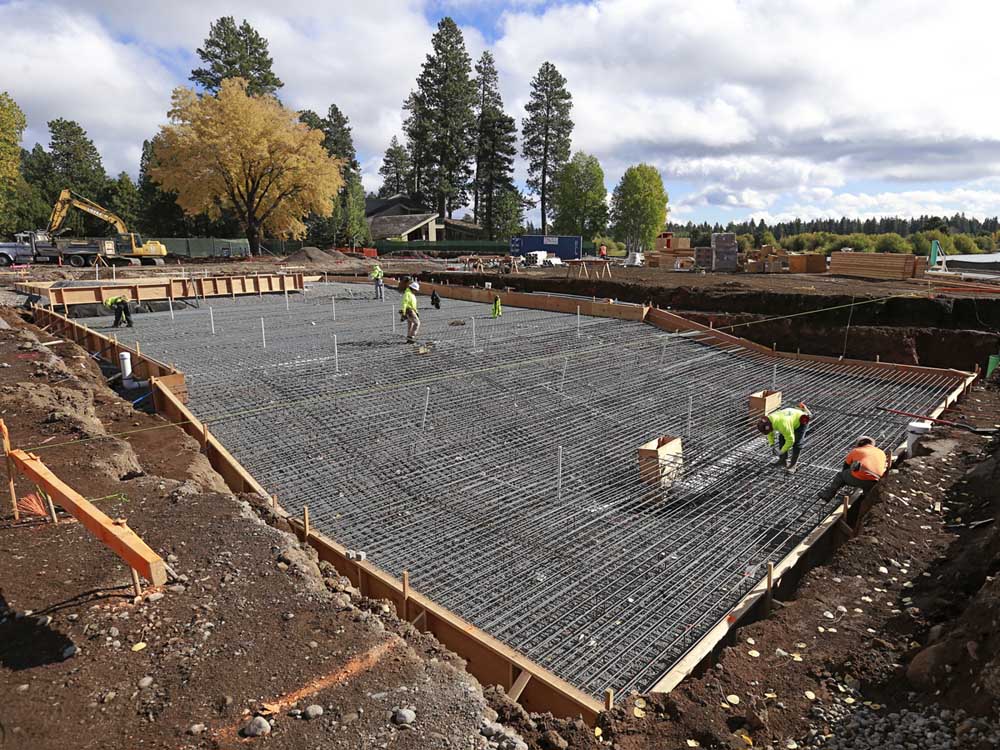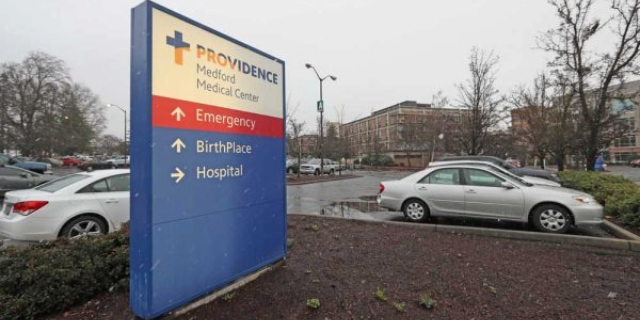Destination resorts are building again
Published 12:00 am Sunday, February 1, 2015

- Joe Kline / The Bulletin file photoTo partially finance a new swimming pool, seen here under construction in October, and other improvements, Black Butte Ranch returned to its previous bank, Bank of the Cascades. Work on the lodge-area redevelopment project was completed in June.
With the Great Recession fading from view and economic indicators signaling a healthy recovery, resort properties in Central Oregon are popular and selling again, managers say.
Building permits for homes and commercial projects at Deschutes County destination resorts increased last year. But the new cadre of vacation- and second-home buyers is cautious and deliberative, wary of the lessons learned in the downturn, when property values plummeted and some resorts drowned in debt.
Trending
Managers, too, are careful, building membership in their communities by offering improved amenities while the market for homeownership improves.
“Obviously, we had a good couple of years in 2013 and 2014,” said Allan Cornelius, director of membership at Brasada Ranch, near Powell Butte. New property owners and “owners who purchased a while back have a feeling that they’re on solid ground.”
Other properties fared not so well.
A judge in U.S. Bankruptcy Court in Portland this month approved a sale of the 2,030-acre Remington Ranch, west of Prineville, to Columbia State Bank. The resort project, first proposed in 2006, foundered when the real estate market collapsed shortly afterward. It and two other resort projects folded before a single home was built.
Brasada Ranch and, in Deschutes County, Tetherow, Pronghorn, Sunriver, Black Butte Ranch and a handful of other resorts have moved ahead with added amenities or expansion plans.
All told, Deschutes County in 2014 issued 60 permits for commercial construction — hotels, pools, roads, barns, etc. — valued at $14.2 million at eight resorts. That’s about 1½ times more than the value of permits approved in 2013 and nearly 5½ times more than 2012.
Trending
Black Butte Ranch received seven permits last year with a combined value of $6.43 million, according to Deschutes County, while the combined value of Sunriver’s 39 permits last year reached $4.83 million. Both resorts are building new pools, with related amenities.
In 2011, Sunriver alone accounted for $12.6 million in permits for the Sunriver Homeowners Aquatic & Recreation Center, a separate pool project. The total value that year in commercial permits for 28 projects at three resorts reached $15.2 million. During 2012-13, seven resorts undertook a total $11.2 million in improvements, according to county data.
Pronghorn, northeast of Bend, in November 2013 announced plans for a $20 million hotel project. Construction is expected to begin by June 30, according to the Deschutes County Community Development Department.
Tetherow, southwest of Bend, in 2014 completed two lodges with a combined 50 rooms. The resort owner, Virtual Reality Enterprises LLC, must build another 133 rooms by 2017 to comply with state destination-resort guidelines. It filed a tentative plan last year to build those lodging units in 23 residential-style buildings of five units each, plus another 23-unit lodge along Skyline Ranch Road near the resort clubhouse and the other two lodges.
The resort also plans for 34 single-family homes and 18 duplexes this year along Meeks Trail, and recently submitted accompanying plans for $1.3 million in streets, lighting, sewer and water lines and other improvements, according to the Community Development Department.
South of Bend, the Sunriver Resort Limited Partnership announced plans in November to expand the Caldera Springs subdivision by as many as 490 residential lots on 614 acres known as Pine Forest. The expansion would occur on Sunriver’s southern border and east of Caldera Springs. No plans are yet filed with the county, which refers to the project as Caldera II.
“The general thing,” said Steve Runner, Sunriver Resort director of planning, development and construction, “is (when) we developed the original Caldera Springs, it had 320 lots, and we’re down to 22, 23 lots remaining. That would be the main motivating factor. We’re just about out of inventory there. It’s time to start thinking of the additional lots.”
Current state law requires destination resorts to build one overnight lodging unit for every 2½ residential units, a ratio Deschutes County recently lowered from one for every two. Nick Lelack, Deschutes County Community Development director, said the improving market for real estate has eased public concerns that resorts like Tetherow and Pronghorn would leverage the lower ratio to redefine themselves as high-end subdivisions. Instead, resorts are eager again to build guest accommodations, he said.
“Now that the market is responding,” he said, “they want to build those units.”
Building new lodging, pools and dining facilities attracts guests who will eventually want a home of their own inside the resort, said Cornelius, of Brasada Ranch. “If you provide a great experience to guests who come to a resort…, that’s your lowest hanging fruit,” he said.
Adding to the experience that existing resort members — homeowners — come to expect is part of his plan at Brasada Ranch, a plan that keeps the resort competitive as the market for second homes improves, Cornelius said. He said Brasada plans a members-only dining facility and a pool deck, for example.
The resort also expects to reach 100 new homes by summer, Cornelius said. The resort, bought in 2010 by a group that includes the Northview Hotel Group, built a reputation as a private club, which paid off last year with recognition in a Condé Nast Traveler reader survey, he said. Readers named Brasada Ranch the top resort destination in the Pacific Northwest.
The uptick in amenity improvements and in creation of home lots shows optimism among resort owners and a gearing up to compete for new members and homebuyers, Lelack said. The county issued 136 building permits last year for homes in resorts, 17 more than in 2013 and 74 more than 2012.
A second home, however, is still a tough sell.
The economy has improved, but buyers, with memories of the fallout from the housing collapse, are wary. They’re thinking more carefully before making a purchase, said Jim Moran, a broker with Coldwell Banker Morris Real Estate, in Bend, who specializes in second homes.
“Really, what it is, as you would imagine, the second-home market in general is going to be the last thing to recover, not the first thing,” he said.
Buyers are paying closer attention to the bottom line than they did during the hot housing market of the early 2000s, Moran said. People are making decisions based on potential rental income and other financial calculations, without the emotion of the housing boom, he said.
“I’m seeing people who have wanted to be here all their lives,” Moran said. “They tell me it’s their best shot. They’ve been looking at Bend a long time and have seen prices go up and down. The tragedy is there’s not a whole lot to look at. Depending on the price range, there’s not a plethora of properties to look at.”
Moran’s observation jibes with a more balanced market described by Jon Peterson of Peterson Economics, a Washington state firm that analyzes the resort market. At the deepest point of the housing market collapse, lot prices fell precipitously as banks sought to clear foreclosed, or distressed, property from their books, he said.
“In 2010, there were probably five or 10 bank-owned properties for every person interested in buying. There were so few buyers it became an extraordinary buyers’ market,” he said. “Banks were willing to get rid of (distressed property) at any price.”
Banks have largely disposed of those properties, and prices are rising in response to renewed interest.
“It went from one of the strangest markets in history,” Peterson said, “to a much more normal market environment.”
— Reporter: 541-617-7815, jditzler@bendbulletin.com








